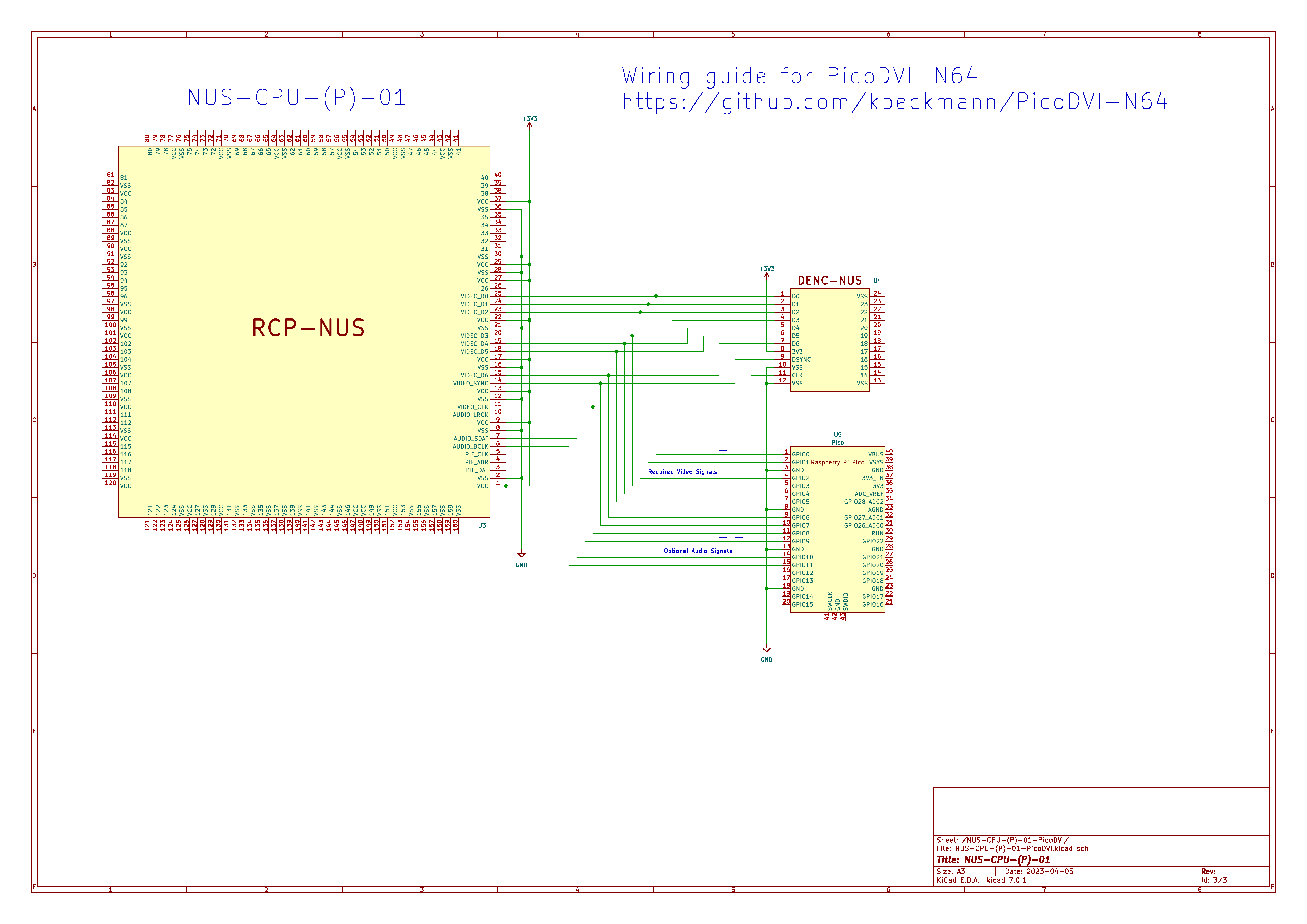This project allows you to output digital video from an N64 using a Raspberry Pi Pico and a DVISock.
- Raspberry Pi Pico
- DVISock
The digital video signals need to be wired to the Pico as per the wiring diagram below:
Pre-built binaries are available in the Releases section of this GitHub repository. You can download the latest binary by following these steps:
- Click on the Releases tab.
- Select the most recent release.
- Download the "PicoDVI-N64" zip file which contains
.uf2files that can be programmed to the pico.
The "PicoDVI-N64" zip file contains the following .uf2 files:
picodvi-n64-32000hz-rgb555.uf2: 32,000 Hz, 15-bit colorpicodvi-n64-32000hz-rgb565.uf2: 32,000 Hz, 16-bit colorpicodvi-n64-44100hz-rgb555.uf2: 44,100 Hz, 15-bit colorpicodvi-n64-44100hz-rgb565.uf2: 44,100 Hz, 16-bit colorpicodvi-n64-48000hz-rgb555.uf2: 48,000 Hz, 15-bit colorpicodvi-n64-48000hz-rgb565.uf2: 48,000 Hz, 16-bit colorpicodvi-n64-96000hz-rgb555.uf2: 96,000 Hz, 15-bit colorpicodvi-n64-96000hz-rgb565.uf2: 96,000 Hz, 16-bit colorpicodvi-n64.uf2: Default configuration (96,000 Hz, 15-bit color)
Choose the .uf2 file that matches your desired audio sample rate and color depth, and use it to flash the Pico. Some applications or games may work better with some configurations.
Before building the software, ensure you have a working Pico SDK setup.
Follow these steps to build the software:
cd software
mkdir build
cd build
cmake ..
make n64
After building the software, you will have a apps/n64/n64.uf2 file which you can use to flash the Pico.
This project has been made possible thanks to the following repositories:

